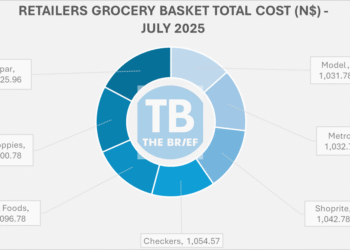
Most African central banks due to decide on interest rates in the next two weeks are set to keep them on hold as decades-high inflation eases after more than a year of tightening.
 Those such as in Egypt, Kenya and Mozambique may also factor into their decisions a drop in global commodity prices and the unwinding of supply constraints. Expectations that the US Federal Reserve may pause its most aggressive hiking cycle since the 1980s, which could weaken the dollar and boost their currencies, will be another consideration.
Others like South Africa and Nigeria, both of which are facing domestic challenges that may keep inflation elevated, are poised to hike.
Zambia, May 17
Policy rate: 9.25%
Inflation rate: 10.2% (April)
Inflation target: 6%-8%
The Bank of Zambia’s monetary policy committee will likely raise its key interest rate for a second time this year to contain double-digit inflation and support its currency, which has come under renewed pressure from slow progress in debt-restructuring talks, said Trevor Hambayi, an independent Lusaka-based economist.
The southern African nation has been struggling to seal a deal to revamp US$12.8 billion in external loans since becoming Africa’s first pandemic-era defaulter in November 2020. Still, the corn harvest currently underway could help temper prices, reducing some pressure on the central bank to raise rates.
Angola, May 19
BNA rate: 17%
Inflation rate: 10.6% (April)
After two consecutive interest-rate cuts this year, policymakers at Banco Nacional de Angola are likely to break the trend and keep borrowing costs unchanged, said Wilson Chimoco, an economist at Universidade Catolica de Angola. That will allow them to assess what a recent bout of currency weakness may mean for annual inflation, after the monthly rate rose for a third time in a row, he said.
South Africa, May 25
Repurchase rate: 7.75%
Inflation rate: 7.1% (March)
Inflation target: 3%-6%
Policymakers in South Africa are widely expected to raise the key rate against a backdrop of significant rand weakness and sticky inflation in an economy flirting with recession.
The median of 14 economists’ estimates in a Bloomberg survey — conducted before the sharp depreciation in the rand caused by a row with the US over allegations that Pretoria supplied weapons to Russia, and angst over South Africa’s energy crisis — was for a quarter-point hike. Several economists such as Absa Bank Ltd.’s Miyelani Maluleke and BNP Paribas’s Jeffrey Schultz have since revised their forecasts higher to 50 basis points.
The South African Reserve Bank has stated clearly “that the priority for monetary policy currently is to bring inflation and inflation expectations down sooner rather than later,†Maluleke said in a research note. “Against this context, we believe that the SARB MPC will respond to the big FX weakening with more tightening.â€
Eswatini and Lesotho, whose currencies are pegged to South Africa’s rand, will probably match the Reserve Bank’s move by month-end.
Mozambique, May 31
MIMO interbank rate: 17.25%
Inflation rate: 9.6% (April)
Mozambique’s central bank will probably keep its benchmark rate steady for the next few months, Isaac Matshego and Nicky Weimar, economists at Nedbank Group Ltd. in neighboring South Africa, said in a note. Annual inflation has peaked, and will continue to ease over the rest of 2023, they said.
The easing should start to see the Banco de Mocambique cutting rates in the third quarter, the economists said.-moneyweb











